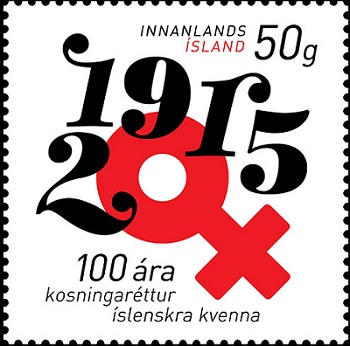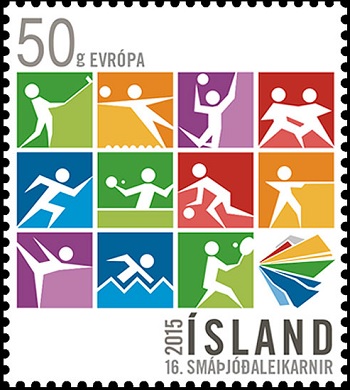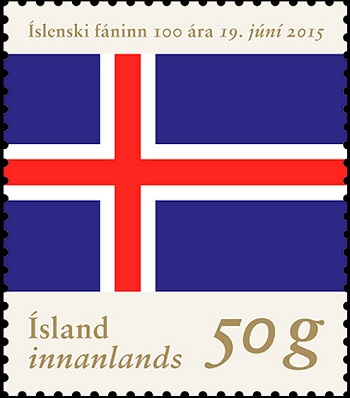100 Years of Women’s Suffrage

Icelandic women had limited suffrage in the municipal elections in 1882. Three years later, the Icelandic Women’s Rights Association (IWRA) started a petition in support of general suffrage for women. Participation was relatively poor. In 1907, a new petition by IWRA gathered the signatures of 11.381 out of the 28.640 women over the age of 15, from all the parishes in Iceland. This demonstrated wide support for voting rights among women. In 1911 Althing (Parliament) passed a bill allowing equal suffrage for men and women. The Danish government, however, rejected the bill. Finally on June 19th 1915, the Danish King ratified an Act of Althing which gave women of 40 years and above the right to vote and made them eligible for election to Parliament. Such age limits were not enacted into law in any other country. Bríet Bjarnhéðinsdóttir, the main champion for the rights of women at the time, objected and called it “a slap in the face of women.” The provision was waived in the Danish-Icelandic Union Act of 1918, allowing for equal suffrage between men and women in 1920.
Issue Date: 30.04.2015 Designer: Kristín Þóra Guðbjartsdóttir Printer: Joh. Enschedé Security Print Process: Offset Lithography Colours: 4 Colours : 33 x 33,35 mm
Games of the Small States of Europe

The Games of the Small States of Europe can be traced back to the year 1981. There was widespread belief that a sports competition between small nations could promote the ideal of the Olympic Movement and strengthen the ties of friendship between nations. European nations with population under one million have the right to participate in the Games. These countries are: Andorra, Iceland, Cyprus, Liechtenstein, Luxembourg, Malta, Monaco, San Marino and Montenegro. The first Small States Games were held in San Marino in 1985. The Games are held every two years in one of the nine countries, organized with the support of the European Olympic Committees (EOC) and recognized by the International Olympic Committee (IOC). The 16th Games will be held in Iceland in June 2015. The National Olympic and Sports Association of Iceland (ÍSÍ) will host the Games for the second time, having previously hosted them in 1997. In addition, ÍSÍ federations, the Ministry of Culture, the City of Reykjavik and Reykjavík Sports Association will support the Games which include six different sports. The optional sports for the 2015 Games will be gymnastics and golf, which will be presented for the first time in the history of the Games.
Issue Date: 30.04.2015 Designer: Elsa Nielsen Printer: Österreichische Staatsdruckerei Process: Offset Lithography Colours: 4 Colours Size: 29 x 33 mm Values: 180
Centenary of the Flag of Iceland

Prime Minister of Iceland Hannes Hafstein established the Flag Committee in December 1913. The Committee was appointed to make recommendations regarding the design, shape and colour of the future Icelandic flag. On July 1st 1914, the Committee submitted two proposals for the colour of the flag. The first was a sky blue flag with a white cross and a bright red cross inside it, the other a white flag with a sky-blue cross with a white and blue stripe on either side. At the request of the Flag Committee, the Prime Minister sought the opinion of the Danish King on the legalization of the blue and white flag. The King rejected the idea, stating that this flag was too similar to the Greek flag. Due to royal opposition, the Committee dropped its proposal of the White-blue, as the flag was called. On June 19th 1915 a royal decree was issued, establishing the tricolor as the flag of Iceland and confirming a new constitution for Iceland as a free and sovereign state under the Danish crown. When the Act of Union took force on December 1st 1918, the national flag was hoisted at the House of Government. The Icelandic Youth Organization later adopted the original White-blue which had gained popularity around the turn of the 20th century.
Issue Date: 30.04.2015 Designer: Hörður Lárusson Printer: Cartor Security Printing, France Process: Offset Lithography Colours: 4 Colours Size: 30,43 x 35 mm
